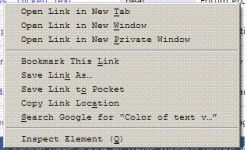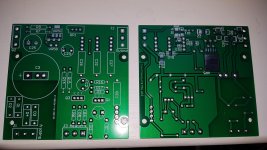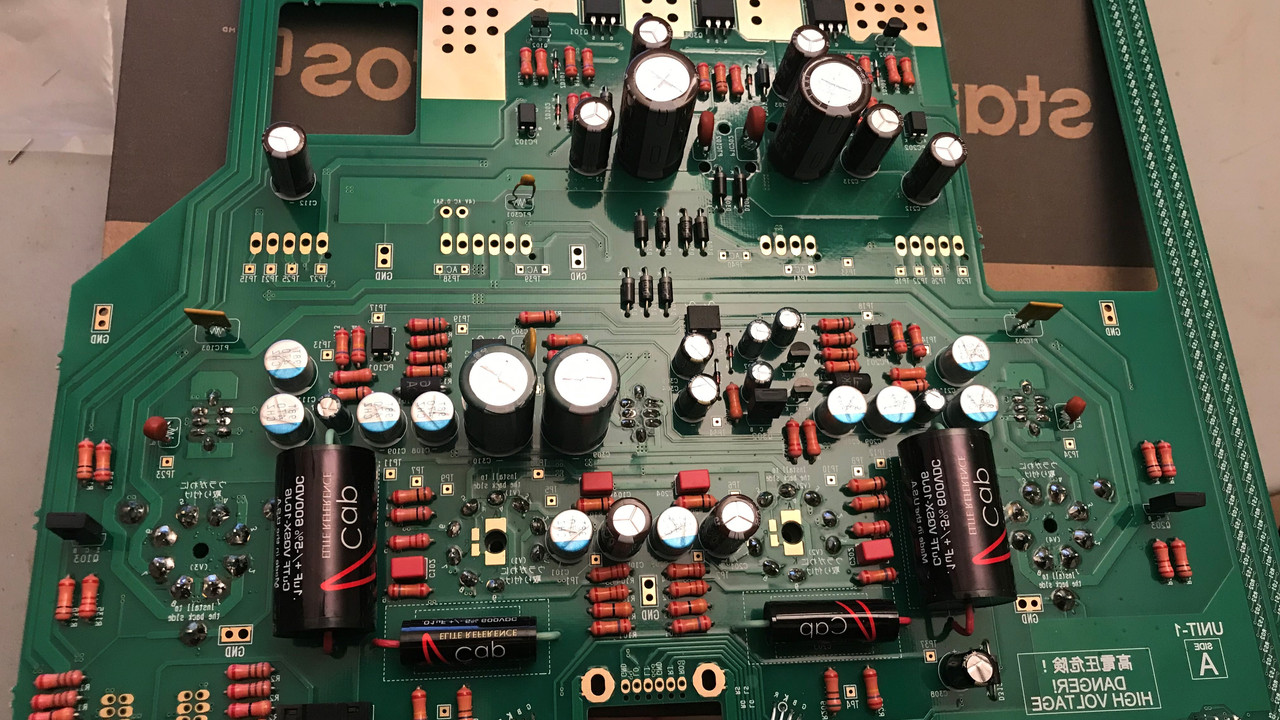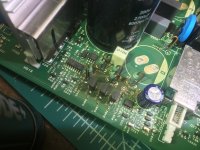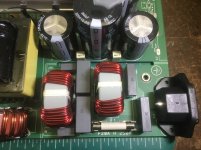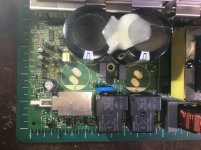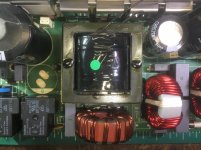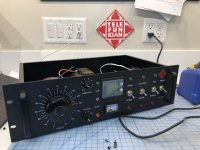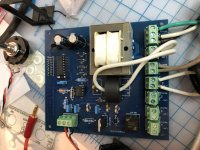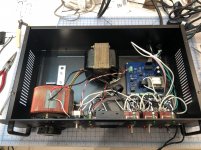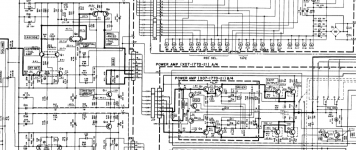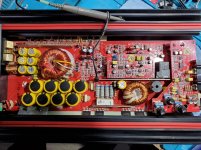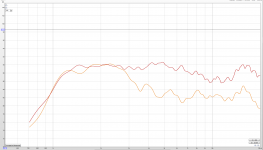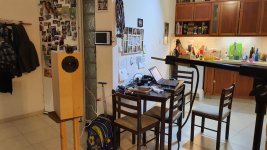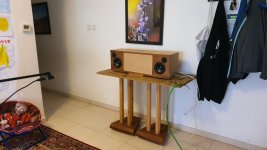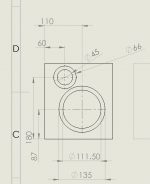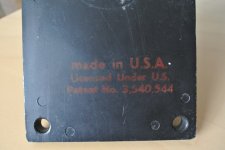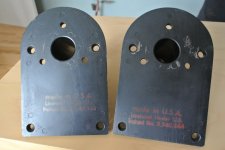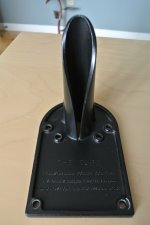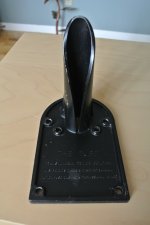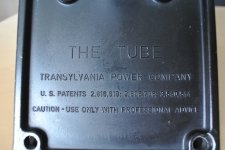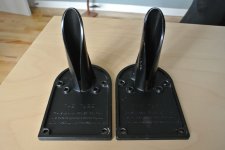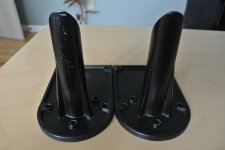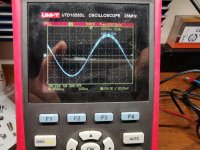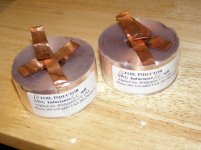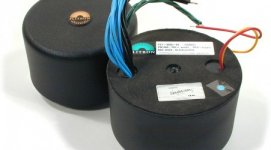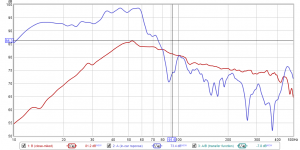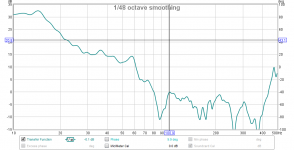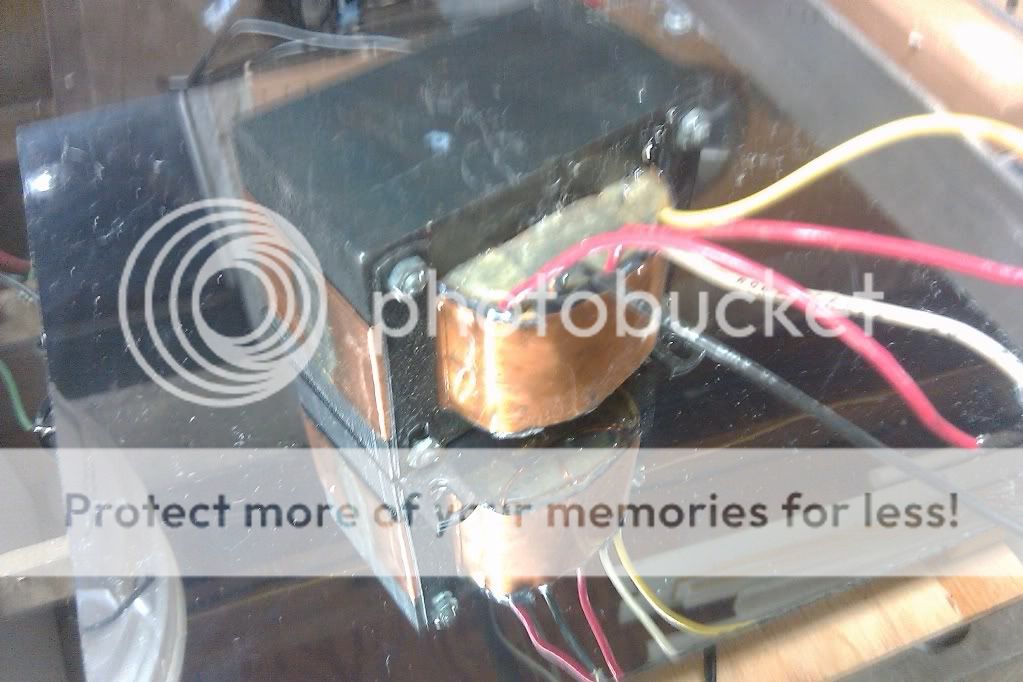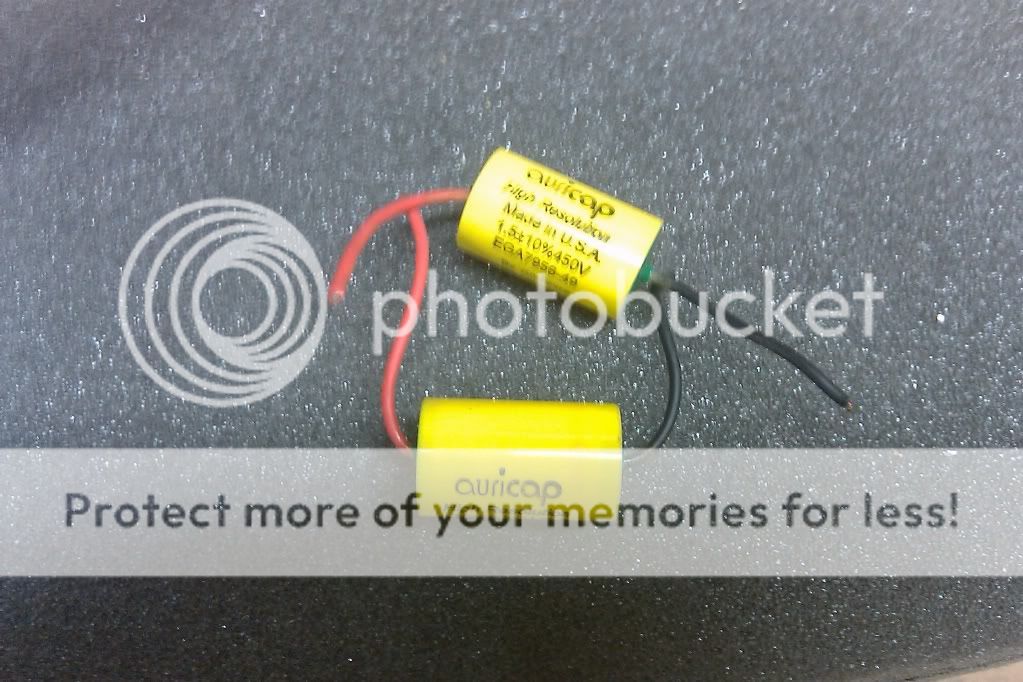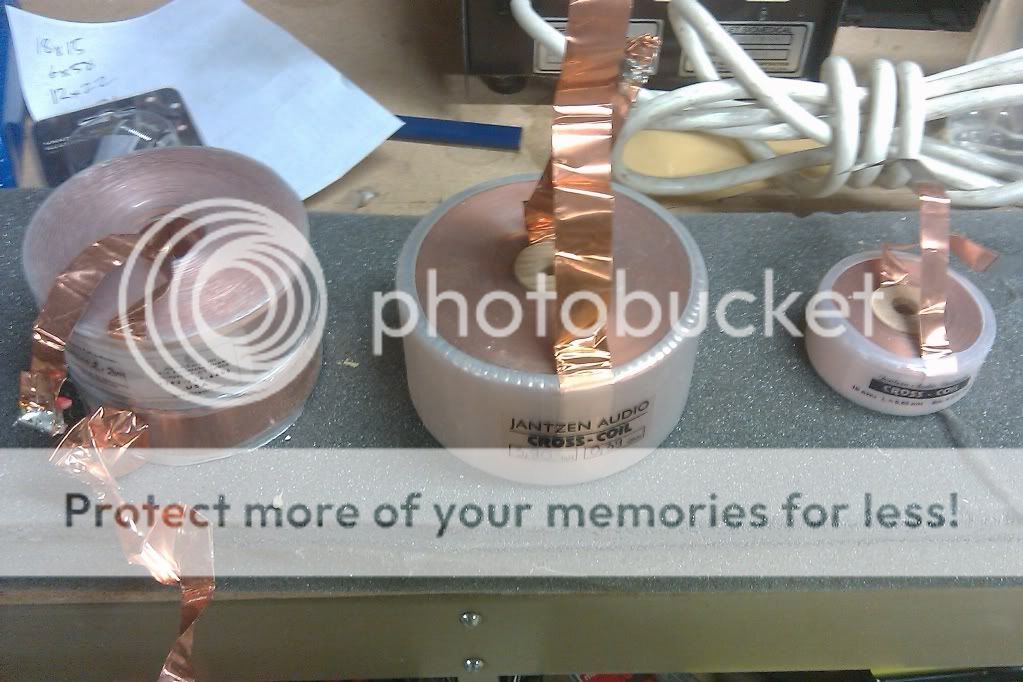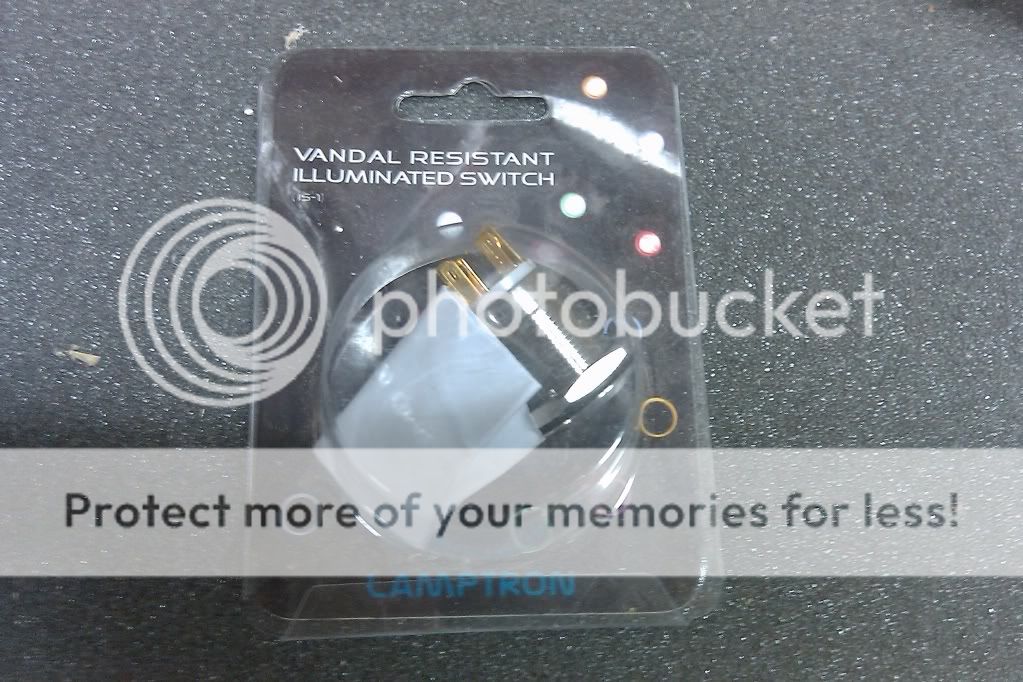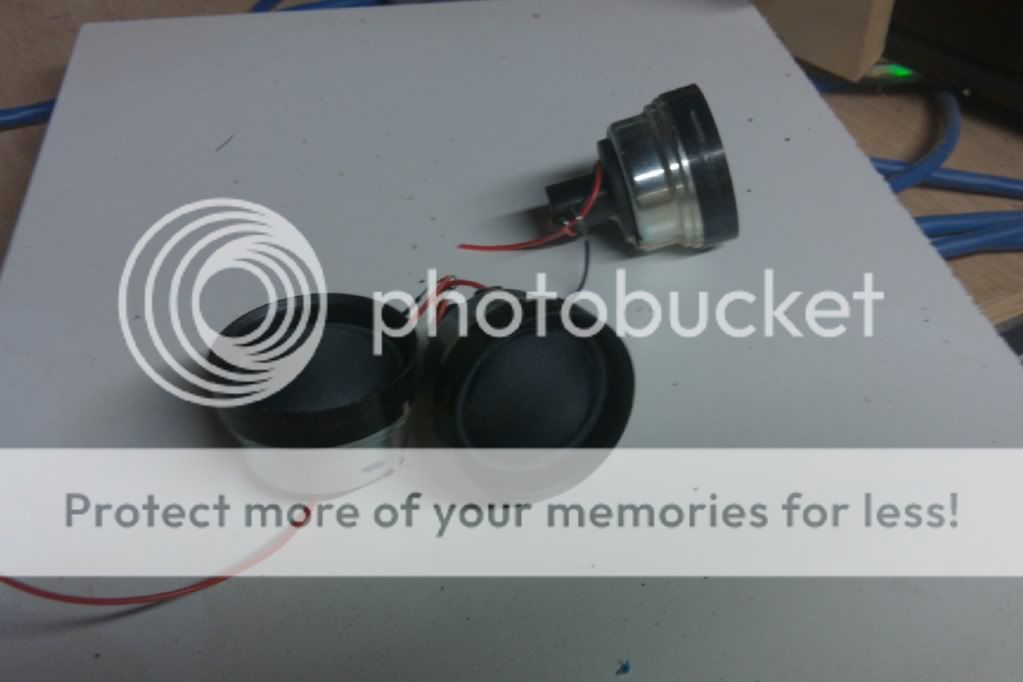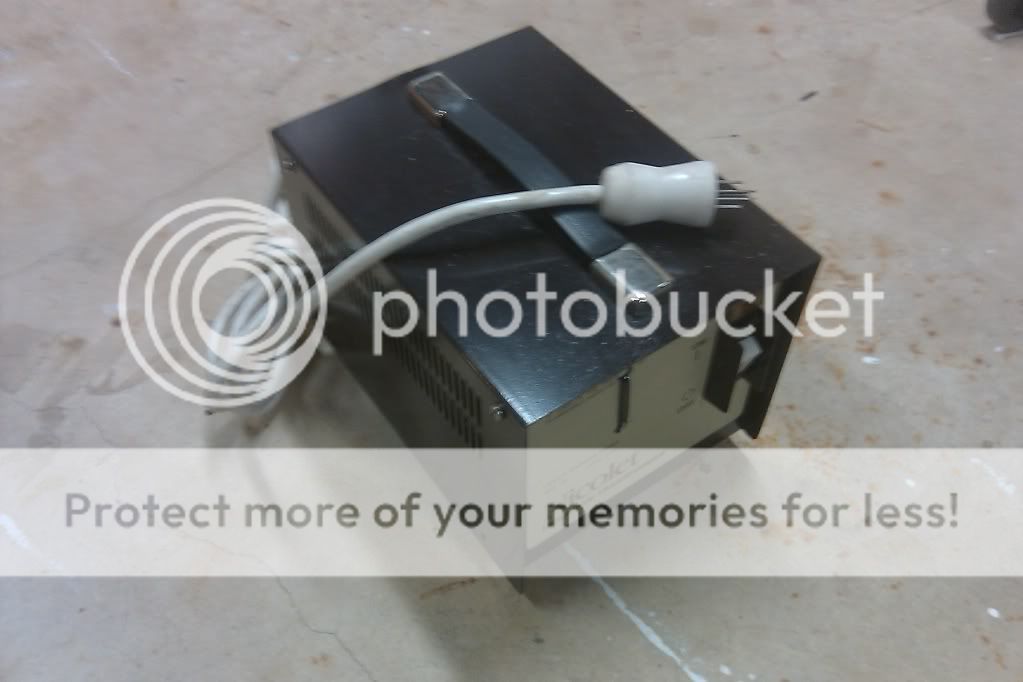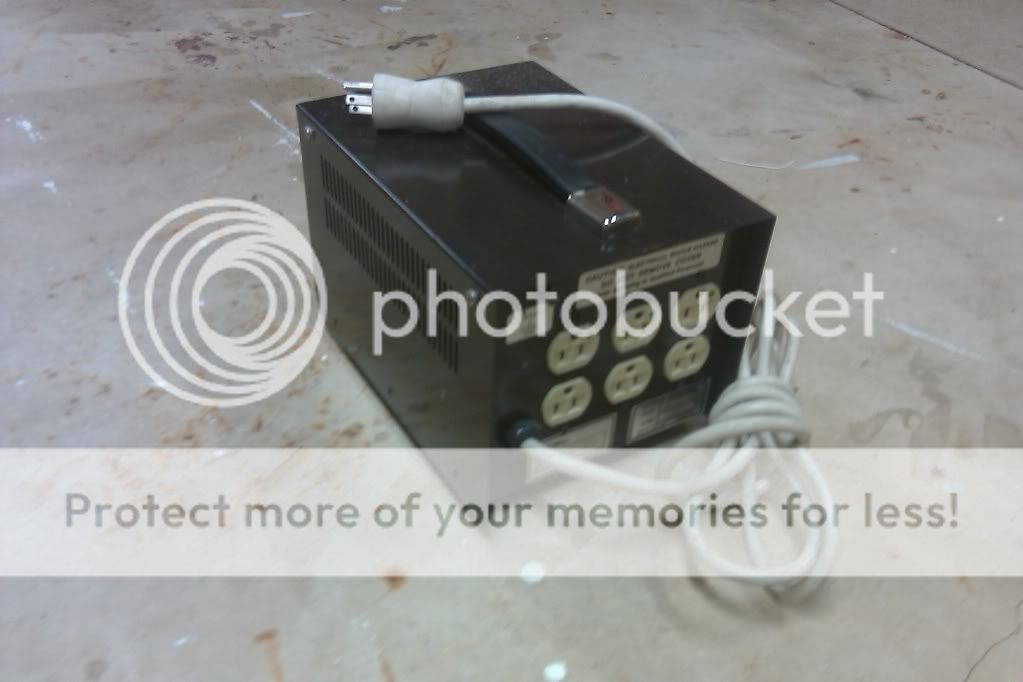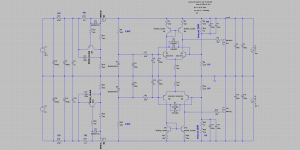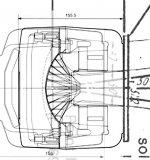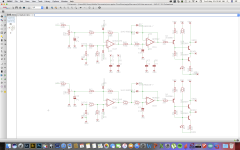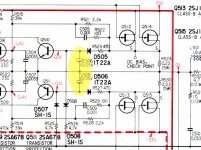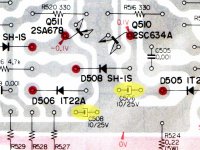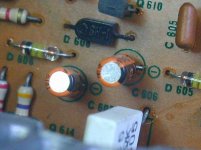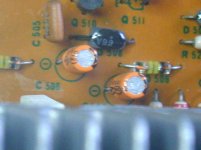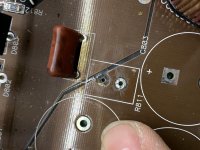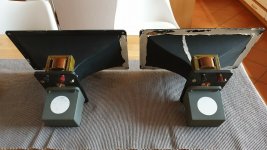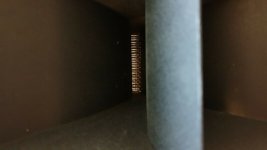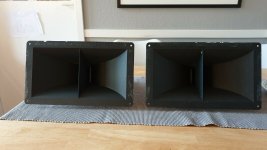Hi friends,
I am hoping to get some other eyes on a design I am working on. This is only my second and I am new, had help with the first from a gracious DIYer, trying to put the knowledge gained to work on my next one, any input is appreciated. I apologize in advance for the book-long post, I make no assumption that I should/will receive any assistance, but if you read on and are willing to give your input, you are a saint.
In general, it is a 6J5 input, 45 output parafeed headphone amplifier. Both stages will be cascode CCS loaded, planned output transformers are Sowter 8665. Mains transformer will be custom-wound by Sowter as well, targeting 300VAC HT secondary right now. DHT filament regulators will be Rod Coleman, including his raw DC supplies (not shown in the schematic)
Here is my draft of the amplifier schematic:
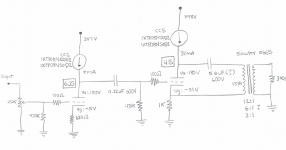
Draft of the HT power supply schematic:
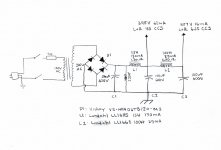
Notes on the amplifier schematic:
Plan to leave the 6J5 cathode resistor unbypassed, modest loss of gain on my LTSpice model with the CCS load in parallel with the 470K grid leak
Leaving the 45 cathode resistor unbypassed as well with the OPT grounded at the top of the cathode resistor, an "ultrafeed" configuration. My understanding is the opposite phase AC signal here will cancel and prevent cathode degeneration. LTSpice model seems to agree here too
Cascode CCS are the IXTP08N100D2 top device and IXTP08N50D2 bottom device offered by K&K audio. The 6J5 CCS will use the included 3W heat sink. As of right now, I am hoping to mount the 45 CCS to the aluminum chassis (K&K has a kit for this express purpose), it will need to dissipate ~6W
Notes on the power supply schematic:
Plan to use 600V Nichicon electrolytics for C1, C2, C3:
https://www.mouser.com/datasheet/2/293/e-lgn-1511829.pdf
Lundahl chokes are likely overkill, I understand parafeed has very high PSRR, unsure how much filtering is necessary given the OPT will have a low turns ratio since this is a headphone amp
Diodes are fast-switching, soft recovery types from Vishay, VS-HFA06TB120-M3
I plan to add some sort of inrush current limiting, perhaps NTC thermistor, TBD
According to PSUD2 model, this supply yields 10mV peak-peak ripple at the top of the 45 CCS, 2uV peak-peak ripple at the top of the 6J5 CCS
Here is where I am having some trouble...choosing a load line/OPT turns ratio. The Sowter 8665 has a 137H primary inductance, a 10K primary with the ability to wind for three different secondaries, 12:1 (65ohm), 6:1 (260ohm), 3:1 (600). I use 300ohm headphones, primarily.
Sowter 8665:
SOWTER TYPE 8665
Given this is a headphone amplifier, and the power supply is already quite inefficient given the CCS output load, I am opting for a 180V 31mA bias point for the 45.
The way I am coneptualizing these load lines - the "infinite" AC impedance of the CCS on the ouput is in parallel with the OPT primary, such that the full load seen by the tube is essentially the primary impedance, for calculation purposes.
When it comes to the peak-to-peak voltage swing at my 180V 31mA bias point, the positive grid swing will be limited by the 0V grid curve, and the negative swing will be limited by the B+ at the top of the CCS (minus some headroom for the CCS drop out voltage, ~10V). As such, the 0V grid curve is the first of these two limitations and dictates the peak-peak swing.
With all of that being said, a 300ohm secondary will give the following impedance ratios with the three different turns ratios:
12:1 >>> 46.2K:300, ~16ohm output impedance with 45 ra = 1650, P into 300ohms = 150mW
6:1 >>> 11.5K:300, ~47ohm output impedance, P into 300ohms = 400mW
3:1 >>> 5K:300, ~103ohm output impedance, P into 300ohms = 757mW
The load lines for these three windings, my 45 bias point, and 300ohm secondary are below. Here is an example of how I came up with them, with the 12:1 winding ratio:
10K:65ohm = 154:1 impedance ratio = 42.6K:300ohm
V = 31mA x 46.2K = 1431V (to determine slope of the load line)
Output impedance = (1650ohm ra of 45 / 154) + 4ohm DCR secondary resistance of Sowter 8665 = 16ohm
Peak-peak voltage swing = 226V, 226V/(2sqrt(2)) = 80Vrms, (80*80Vrms)/42.6K = 150mW
Assuming all of that is accurate, which may be a HUGE assumption
🙂 here are the load lines in
red, bias point in
green, peak negative swing in
orange, max anode dissipation in
purple:
12:1 winding ratio, 180V, 31mA, 46.2K
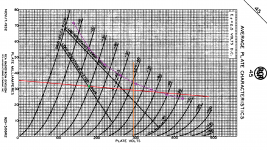
6:1 winding ratio, 180V, 31mA, 11.5K
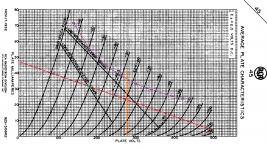
3:1 winding ratio, 180V, 31ma, 5K
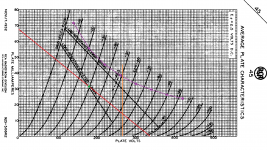
There is some concern on the 12:1 46.2K load line, as it passes above the max anode dissipation on the negative peaks, however, given the tube will clip at 0V grid much earlier than this (not to mention I would be deaf), is this truly a concern?
The crux of my problem is which winding I should be using for a 300ohm load, and if there is anything else I am overlooking (quite likely).
The OTHER major question, which I believe will need to be answered via experimentation, is the size of the parafeed cap. I understand there are ways to estimate its value using choke load, but for CCS, I don't believe there is. I came across a post by Paul Joppa of Bottlehead stating that there is no reliable way to calculate the parafeed capacitor size for a CCS load, but to try various sizes and take frequency response measurements.
If you have gotten this far, thank you!!! I hope this is not a tall ask to have someone else look over my work, but I am a firm believer in learn-by-doing, some of this information is not easy to come buy, been at it for three months non-stop, and I am no engineer :/
Thanks again.
